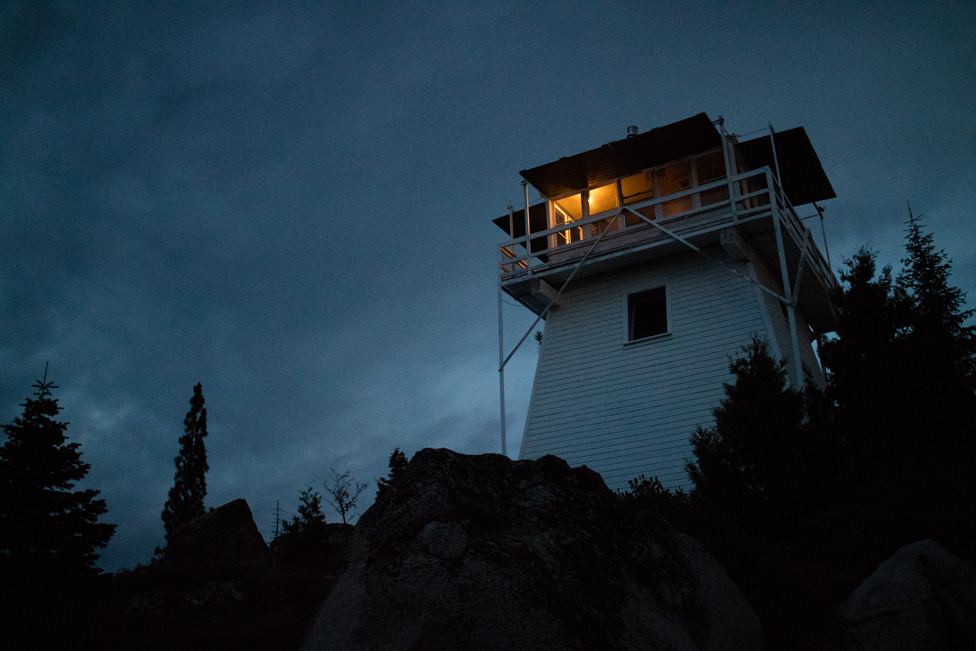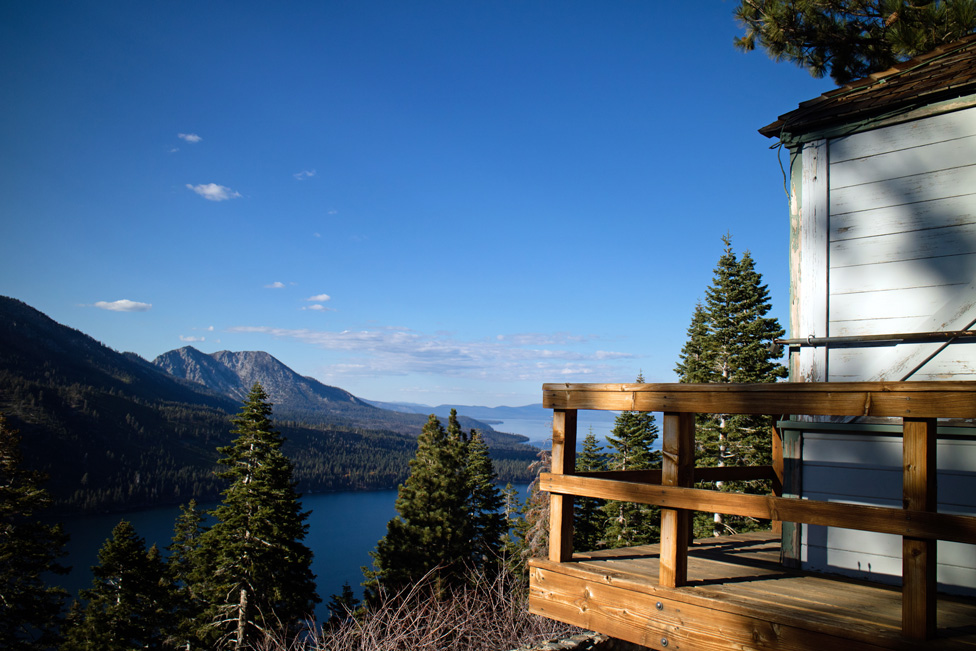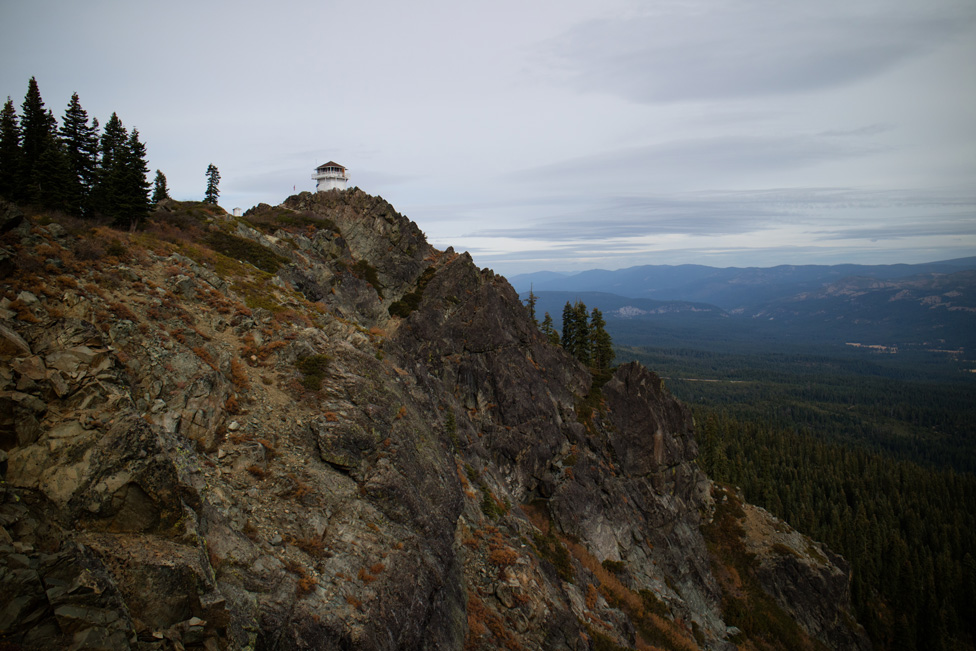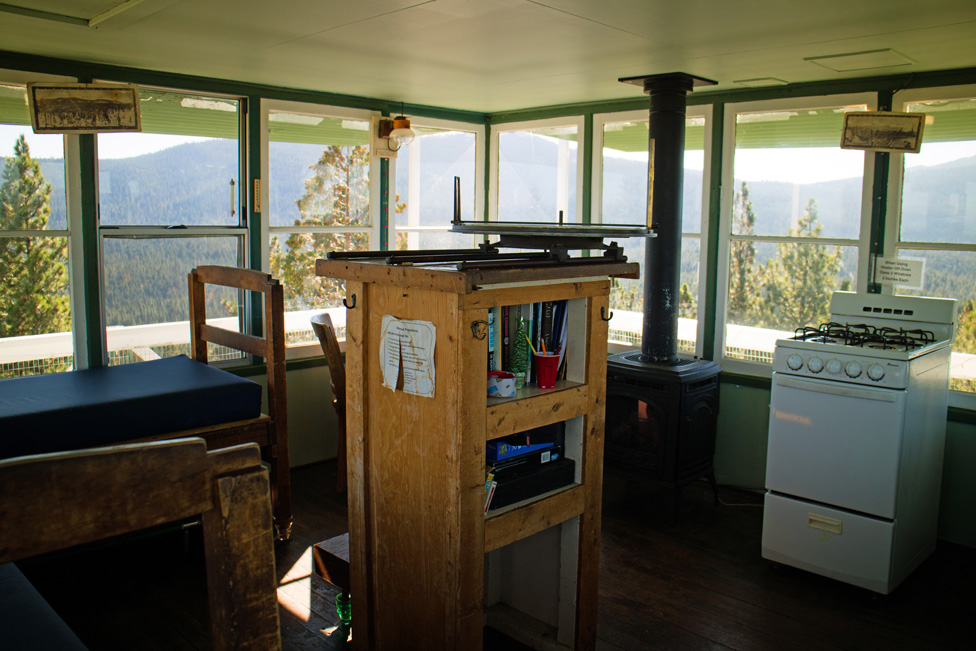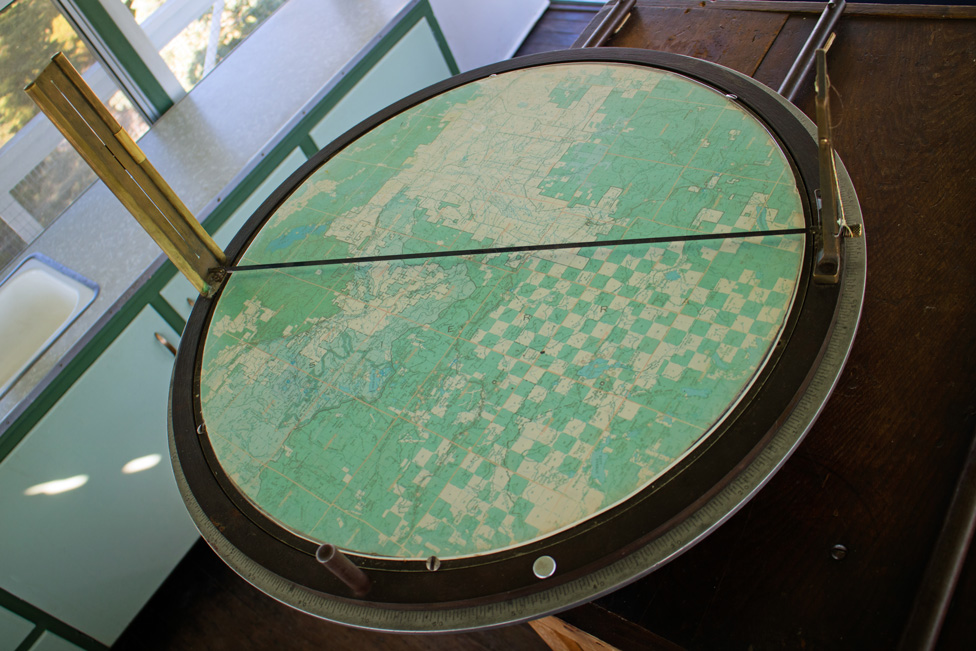Old fire lookouts offer sleepovers with history, panoramas and unexpected comfort
The Washington Post
By Erin E. Williams
March 15, 2019
Tucked into my sleeping bag, I listened to coyotes call each other on the ground 30 feet below. Nearby treetops swayed in wind that ripped through the mountains. The stars were impossibly close.
“Are you warm enough?” asked my husband from his sleeping bag.
I was. While the coyotes and 40-degree October wind howled, our little cabin was snug and warm. Strings of flamingo and flower lights embraced us in a cheery glow. It felt like a slumber party in the sky.
Andrew and I were camping among, not under, the stars.
Stretching into the heavens from mountaintops, thousands of towers like this once stood sentry over our national forests. The U.S. Forest Service offers about 75 of these fire lookouts for nightly rentals in mostly Western states, providing outdoorsy visitors with commanding views, wildlife watching and seclusion. Some of them, like our Calpine Lookout that night in California, are even accessible via cross-country skis, snowshoes or snowmobiles in winter.
These lookouts are threads in the fabric of public lands history. Following disastrous 1910 wildfires that burned 3 million acres of forest, the Forest Service built thousands of them across the country. In the 1930s, the Civilian Conservation Corps constructed hundreds more. For decades, staffers — also called lookouts — lived and worked in them during each wildfire season, constantly vigilant for smoke. When they saw a fire, they pinpointed the location and reported it to suppression teams.
After peaking at about 5,000 in the late 1930s, the number of Forest Service lookouts dwindled as more people moved to nearby areas, bringing more eyes and ears — these remote outposts were not as remote anymore. Improved fire-detection technologies such as cameras, satellites and aircraft also contributed to the decline. Fire suppression’s legacy is complicated, and fire management tactics and policy continue to change as science evolves.
Wildfire remains a substantial and persistent problem. California’s 2018 wildfire season was the most catastrophic in state history. The Camp Fire alone was the deadliest, most destructive wildfire in California’s history; it burned 153,336 acres, destroyed 13,972 homes and killed 85 people.
Fewer than 2,000 lookouts remain. Volunteers or paid Forest Service employees staff about 500 of them, and the rest are decommissioned.
It’s easy to see the allure of holing up in the wild, spending several months as a near-hermit in a remote bird’s-eye tower. Lookouts have even influenced American literature — writers such as Gary Snyder, Edward Abbey and Jack Kerouac lived and worked in these skyboxes.
Andrew and I prepped for our trip by checking out one of three lookouts close to home in Lake Tahoe. Bouncing along a twisting ridgeline road, we reached Angora at the lake’s southern end.
Built in 1924, it was closed in the late 1970s. Interpretive signs provided a historical overview, but I wanted some first-person perspective. I called a local acquaintance, Randy Mundt. With his wife, Teri, he lived and worked here from 1971 through 1975.
“We felt like we lived in the most spectacular place in the whole Tahoe Basin,” he said.
It was a strong statement, given the area’s stunning natural drama, but he wasn’t wrong. Walking beside the residence and observation building at 7,256 feet in elevation, I peered over the steep slopes that plunged into the surrounding landscape. On one side, mountain peaks loomed over the Tahoe Valley and the trees scorched in 2007’s devastating Angora Fire . On the other, Fallen Leaf Lake glittered in front of Mount Tallac and Lake Tahoe.
During a typical fire season, from April and often until the first snowfall, Randy and Teri rose early every day and ate breakfast on their tiny home’s deck next to their Volkswagen bus. They commuted about 50 feet to start their eight- to 10-hour workday, circling the observation catwalk every 15 minutes to search for smoke. At night, they listened to music and watched the sun set over Mount Tallac. They remained on call 24 hours a day, sometimes handling fire-related issues in the middle of the night.
“We took it seriously,” Randy recalled. “One day, we set a record by calling in five fires during a lightning storm.” The couple found their first fire six weeks into the job, a roaring tower of flame from a Forest Service cabin. On average, they spotted perhaps 20 fires each season.
Angora was one of the most-visited lookouts because of its accessibility. As a result, for a time after they ended their seasonal residency, Randy and Teri gave talks there about their life as lookouts.
Randy also retained his eye: He reported the Angora Fire decades after the Forest Service decommissioned the tower.
“The lookout wasn’t manned, but I noticed the smoke from our flea market nearby,” he said. “I got to a phone and called it in. I could see right away that it wasn’t from a chimney or campfire.”
The wildfire burned 3,100 acres and destroyed 254 homes.
About 80 miles north of the Angora Lookout, Andrew and I drove along a steep, unpaved road in the Tahoe National Forest. We emerged above the tree line where the 5,980-foot Calpine Lookout surveyed the landscape.
At the tower I climbed still farther, up 29 outside wooden stairs that made me grateful we had packed light (sleeping bags and camping pillows, a change of clothes, lots of water and food for two meals). A windowed observation cab, or top room, adorned the building like a crown. A narrow walkway circled the perimeter, providing a 360-degree view of its kingdom: seemingly endless mountains, trees and valleys.
The Civilian Conservation Corps built the lookout in 1934. It remained active each summer until 1975 . Calpine wasn’t occupied for a couple of decades after decommission, and it degraded in the Alpine environment. In the early 2000s, Forest Service employees and volunteers began its restoration, and it opened to visitors in 2005. Today, it boasts a nearly 100 percent occupancy rate.
“Restoration work is the seed for lookout projects to bloom,” said Joe Flannery, acting public affairs officer for Tahoe National Forest , when I caught up with him later by phone.
As is the case with Calpine, restoration is often a partnership among the Forest Service, other agencies, nonprofits organizations, volunteers and community businesses. And as far as the modest overnight fees that Andrew and I paid, almost all went back to maintaining and improving the lookout.
Flannery had some advice for visitors like us who want to sample lookout life.
“Bring a telescope or binoculars, so you can watch the sky and forest,” he said. “You can picture yourself up there alone in the 1940s, getting supplies delivered every two weeks. You can reenact the historical experience of being a fire lookout.”
Thanks to its restoration, Calpine’s white and sage green tower didn’t show its age. The 14-by-14-foot cab boasted painstaking cleanliness — an important measure to dissuade hungry critters from taking up residence. Furnishings were basic but decidedly homey: two twin beds and rollaway cot, an oven, a cast-iron stove and a blue checkered dining tablecloth.
Above the walls of windows enclosing the cab, black-and-white panoramic photos from 1935 identified landmarks including Tahoe and Plumas National Forests, Haskell Peak, Sierra Valley, Beckwith Pass and Mohawk Valley.
In the center of the room stood the tower’s heart: the Osborne Fire Finder, which William Bushnell Osborne Jr. invented in 1911 . An upright, brass smoke-sighting mechanism rose from its horizontal, circular map of the surrounding Sierra Nevada. I pressed my face to the mechanism and sighted a fictional burn, just as decades of lookouts in this room had done for real fires.
Padding the feet of both beds and a small wooden stool, glass insulators betrayed an occupational hazard of working in a mountaintop tower. The glass protects inhabitants against electrical current from lightning strikes. Here too, I imagined the awe and vulnerability a lookout must have felt while huddling on the stool in this window-ringed room during a ferocious storm. I remembered what Randy told me about one particular evening.
“I watched a huge thundercloud and lightning march across the valley right toward us,” he said. “We got away from the windows, and I remember waiting for all hell to break loose. Eventually there was a strike right behind us, but we were okay.”
There was nobody else around for miles. I had anticipated solitude in such a wilderness setting, but instead, a forest community surrounded us. As soon as we descended to a fire pit and picnic table, an enterprising chipmunk began trying to break into the cab’s door. Others barked and chased each other in the boulders. Songbirds chirped and flitted from tree to tree. Squirrels disassembled pine cones in the branches, sending pieces spiraling downward.
Andrew rambled around the trees while I climbed back up and circled the catwalk, darting from one sprawling vista to another.
Guest book entries recommended a variety of nearby activities, including river tubing, mountain biking, hiking and even visiting other lookouts. We opted for two short hikes. The first took us 2½ miles around five sparkling Alpine lakes, including whimsically named Big Bear, Little Bear and Cub .
On the way to our second hike, we fretted that we might bottom out our car as we lurched up a dirt road so rocky, it seemed best suited to an all-terrain vehicle.
“I think this is as far as we can take it,” Andrew said after we both cringed, expecting a particularly sharp stone to pop our tire. We walked the rest of the way to one more lookout: Mills Peak, perched at 7,300 feet on a precipitous, massive hunk of granite. It resembled an eagle’s nest.
Built in the early 1930s , Mills Peak isn’t open to overnighters, but visitors are welcome. We climbed the stairs to its catwalk. My knees quivered as I stood above the plunging rock and watched a vulture soar in the sky below us. I peeled my fingers from the handrail and shakily descended.
While the sun set at our aerie, mountains’ shadows stretched languidly across the forest and crickets chirped. Solar-powered fairy lights twinkled on the balcony as I lit the propane lights with a match. Since an array of cookware awaited us under the faucetless sink, we didn’t have to settle for camping grub — we sautéed vegetables on the gas stove and ate a flamingo-lit dinner.
Even without a telescope, the stars were beautiful. Slack-jawed, we stared at them until Andrew finally broke the silence.
“We didn’t bring anything else to do.”
He fidgeted. Despite endless daytime adventures, our nighttime options were limited. We had been here for a few hours. I wondered what sort of cabin fever might seize him if we lived here for six months.
But under the Osborne Fire Finder, someone had squirreled away an emergency kit for antsy husbands: Scrabble. We played into the night.
I settled into my bed, content in the cozy cab. The crickets were silent, and the wind buffeted the treetops. The forest slept. Here was the seclusion I had expected. After a few minutes in the moonless silence, it felt a little lonely.
That’s when the coyotes began howling.
Original at The Washington Post.
PDF here: 2019-03-17 fire lookouts.

